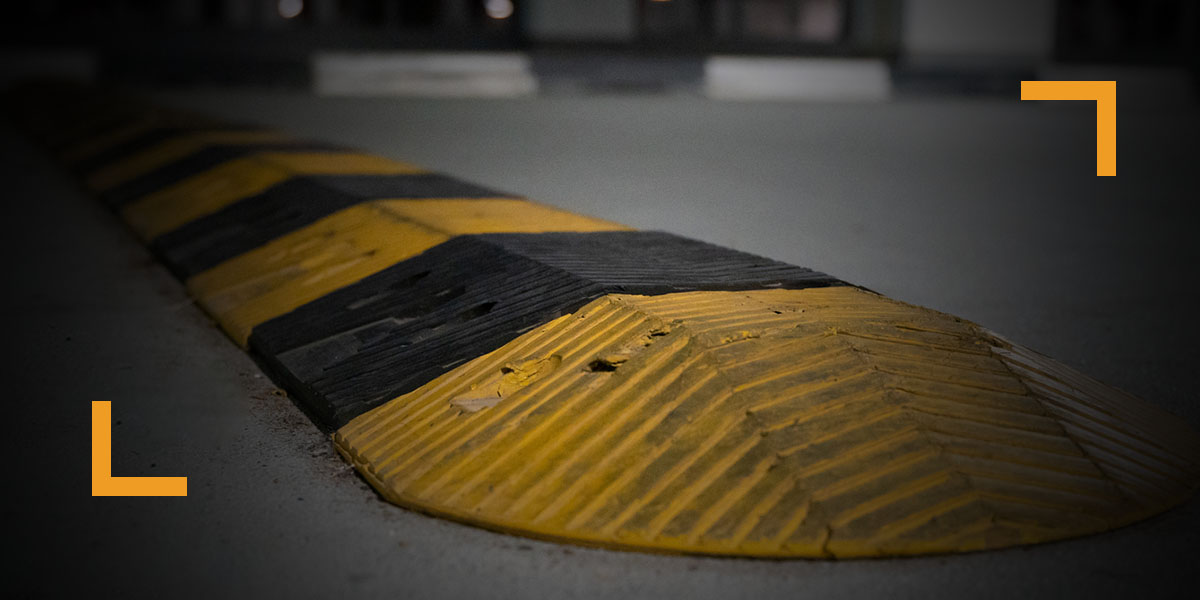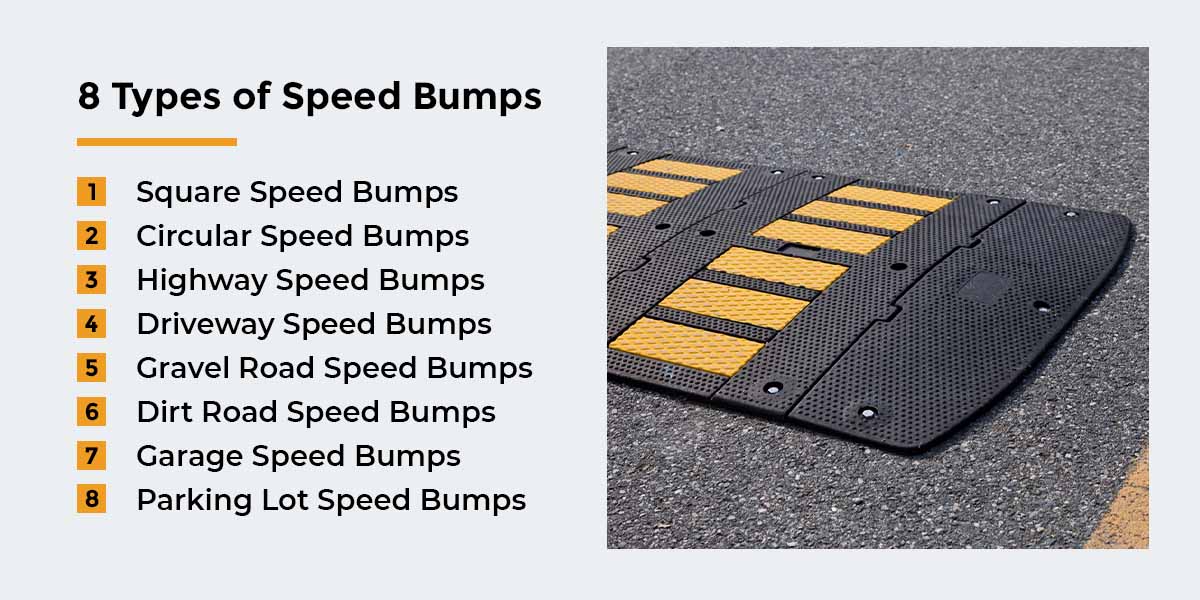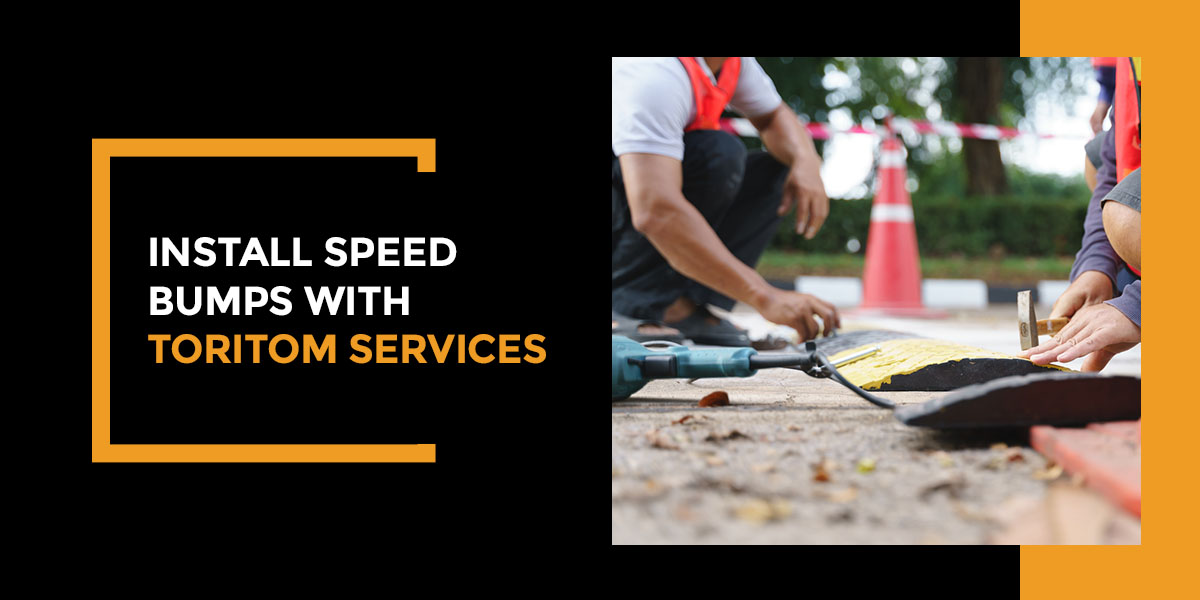
Speed bumps are essential for controlling traffic and reducing vehicle speed. When you want to increase safety on a commercial property, a speed bump can help you achieve your goals.
What Are Speed Bumps Commonly Used For?
Most motorists are familiar with speed bumps. They often encounter them in commercial and residential areas where speed limits are usually lower and more pedestrians are present. Adding speed bumps to a property can offer many functions, including:
- Controlling speed: Speed bumps force vehicles to slow down to navigate areas safely. Driving over a speed bump too quickly can damage the vehicle’s structure, like its axle alignment. Because of this, speed bumps are often installed in areas where drivers are prone to speeding or where you want to control speeds better. With this regulatory feature on the property, you can ensure motorists follow speed standards.
- Managing traffic flow: Property managers often try to control traffic patterns and flow with various signs and markings, but speedy drivers might ignore them. Speed bumps force drivers to slow down, so these bumps can also ensure motorists follow navigational requirements, from stop signs to directional flow. Many property managers place speed bumps near intersections to reduce accidents by requiring drivers to stop or slow down before proceeding.
- Protecting pedestrians: Motorists and high speeds can pose greater risks to pedestrians walking on the property. Managers often install speed bumps around pedestrian crossings so drivers slow down and become more aware of others. Speed bumps can help pedestrians feel safer and have a more positive experience on the property.
- Increasing awareness: Regardless of where you place them, speed bumps are excellent at making drivers more aware of what’s around them. Because drivers must slow down to go over them, they can better see and comprehend their surroundings, from other motorists and pedestrians to signs, markings and rules. They have more time to react to hard-to-see bicyclists or motorcyclists and can better process signs for improved navigation.
With these functions in mind, you can determine if installing speed bumps will be effective and help you meet goals and safety standards.
Speed Bumps vs. Speed Humps
When placing speed-controlling features on the properties you manage, you should understand whether you need speed bumps or speed humps. While similar, they have unique characteristics and goals, making it essential to choose the right one for the property. Both features install on pavement and aim to encourage motorists to slow down. They also protect pedestrians because they reduce vehicle speed.
Speed bumps are narrower and higher than speed humps. A vehicle’s front and back axles travel over the speed bump separately. The design causes drivers to make more stops to go over the speed bump safely, allowing for more speed and navigation control. However, you will have to place them strategically because stopping suddenly in higher speed areas can cause more accidents. It’s also more challenging for emergency vehicles to go over speed bumps.
Speed humps are lower and longer than speed bumps. Because they are shallow, they require less speed reduction to go over them. Most designs are long enough that the front and back wheel axles will be on the hump at the same time. This design makes it less strenuous on the vehicle’s undercarriage. You can place these in higher-traffic areas because they require less drastic stops. Additionally, emergency vehicles can more easily navigate spaces with speed humps.

8 Types of Speed Bumps
When implementing safety features at the properties you manage, you can increase a speed bump’s functionality by choosing the right type for the space. The various types have different configurations, materials or functions for specific environments and purposes. Understanding what the property needs can help you install the best speed bump solution.
1. Square Speed Bumps
Square speed bumps configure several raised squares together to create a cohesive bump. You must place the individual squares close enough together to ensure motorists can’t navigate through the empty areas to avoid the bump entirely. The unique design can help cultivate the property’s aesthetic and stand out to ensure people follow the safety regulations.
2. Circular Speed Bumps
Similar to square speed bumps, circular speed bumps arrange circles together to make a speed bump. They can come in various sizes and colors, allowing you to create the speed control and aesthetic design you want for the property. Because they involve several individual circles, you must place them close enough together to preserve their functionality.
3. Highway Speed Bumps
Highway speed bumps are speed controllers placed on highways. These are uncommon because higher highway speeds can disrupt traffic, causing buildup and congestion. Further, sudden stops at higher speeds can increase rear-ending accidents between vehicles. Using these speed bumps sparingly and strategically ensures traffic and speed control while optimizing safety.
4. Driveway Speed Bumps
Driveway speed bumps control speed and traffic flow along regular roads and throughways. These are common because the reduced speed on these roads makes it safer to use speed bumps. Speed bumps come in various materials, so you can choose concrete, plastic, rubber and asphalt speed bumps.
5. Gravel Road Speed Bumps
Regardless of the material type, property managers might want to increase safety and control speed on sites. However, some materials offer additional challenges to motorists and passersby. Loose road materials like gravel can kick up debris with increased speeds and activity, and speed bumps can help manage this downside. With less dirt in the air, properties nearby can stay cleaner for better appearances and functions.
Because gravel can erode over time, certain materials are better for installing speed bumps. You should consider solid materials like rubber, concrete or asphalt.
6. Dirt Road Speed Bumps
Dirt road speed bumps have the same function as gravel road options. The only difference is that they work for dirt roads instead of gravel ones. Like gravel road speed bumps, they help prevent dirt from dislodging and entering the air by reducing speeds and controlling traffic. They also do better with solid speed bump materials, so consider investing in an asphalt, rubber or concrete speed bump.
7. Garage Speed Bumps
Garage speed bumps are specific to their location — you will only find this speed bump in a parking garage. Like many other types, they help control traffic flow and prevent speeding to create a safer environment for drivers and pedestrians. Many designers place them around entrances and intersections for optimized effectiveness.
8. Parking Lot Speed Bumps
Parking lot speed bumps are placed throughout parking lots to improve safety, speed control and traffic flow. Their placement is similar to those in garages, helping to reduce collisions and protect motorists and pedestrians.
Install Speed Bumps With ToriTom Services
When you know what type of speed bump will best serve the property you manage, you can prepare for installation. ToriTom Services specializes in commercial property management upkeep, offering premium installation and maintenance services for parking lots and garages. We can help you install safety and functionality features like speed bumps on properties you manage.
Contact ToriTom Services today to learn how we can help you maintain high quality.

